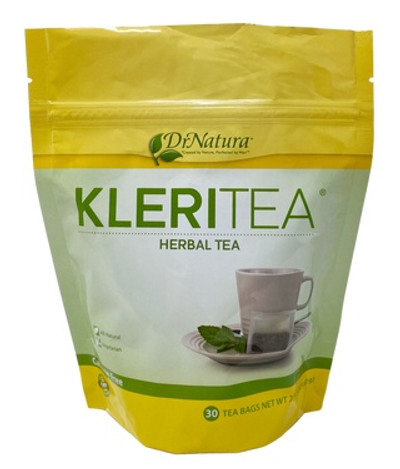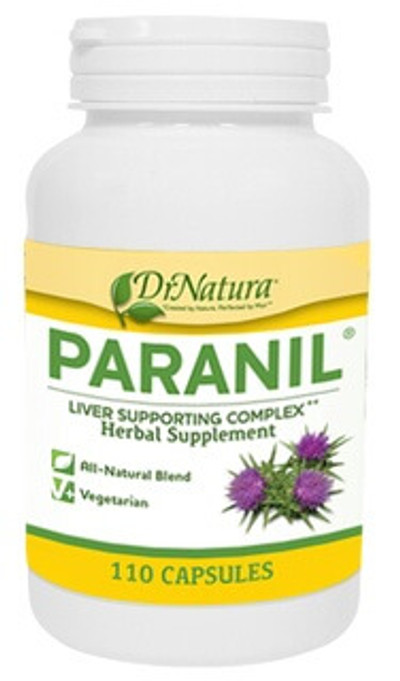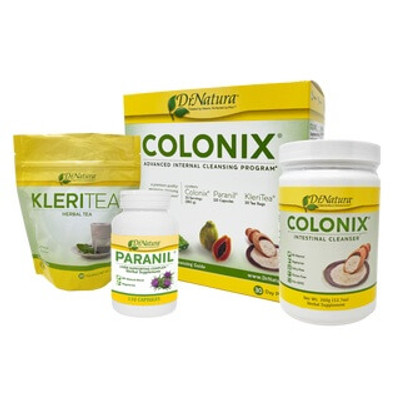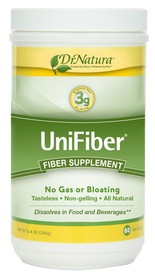
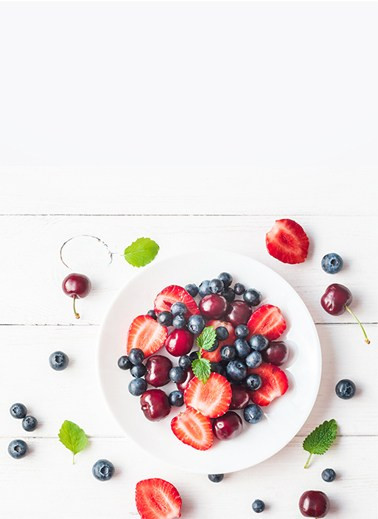
What to Eat While Cleansing
You have decided to invest in your health by taking DrNatura. Good for you! And, because you don't do things halfway, you want to be sure that you are doing all you can to get the most out of the cleansing experience, which is why you're wondering what you should eat while cleansing.
This makes good sense! After all, continuing to eat and drink nutritionally poor foods while completing a cleanse would be something like trying to drain a bathtub while keeping the water running! So let's talk about food and drink choices.



From the top, we have to recognize that each one of us is absolutely unique, and dietary needs vary from person to person. This means that getting a detailed nutritional profile from a trained Dietitian, Nutritionist, or Nutritional Consultant is a great way to determine your particular nutrient requirements. However, in general, there are several basic things to keep in mind about good nutrition practices and choices, and how they can super charge your cleansing experience.

Water
First thing to consider: Water. The importance of drinking clean, pure water cannot be overstated, particularly during a cleanse. While food gives you calories and nutrients, water is essential for many aspects of good health. It is involved in carrying nutrients throughout the body, aiding digestion, maintaining your electrolyte balance, and - especially useful during a fiber-based cleanse like DrNatura's Colonix program - bulking up fiber and moving it through the body so it can do its job. [1] In fact, getting enough water is so essential to the cleansing process that we specifically recommend you drink 8 eight-ounce glasses of water each day during the cleanse. [2]
Keep in mind that, not only do other drinks compete for your daily intake of water, but some of them may run completely counter to your cleansing objectives. In particular, drinks that contain sugar, artificial sweeteners, colors, flavors, and other unnatural chemicals or additives may only contribute to what natural health proponents refer to as "toxins" that a cleanse helps remove from the body. [3] So, when you have a choice between water and anything else - soda, coffee, energy drinks, and other specialty beverages - choose water.
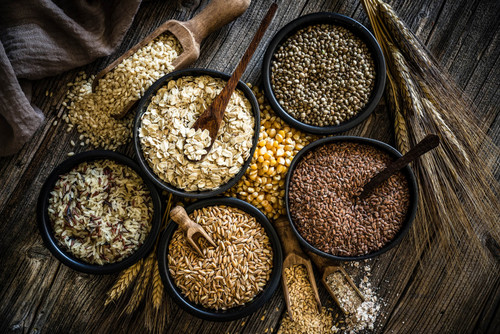
Whole Grains
By now, most people have heard of "carbs", which are frequently (and incorrectly) looked at as the "enemy" of a healthy diet. The truth is that carbohydrates are absolutely essential to good health, as they are the source of energy that the body needs to function. [4] One of the best sources of healthy carbs is whole grains. There are a variety to choose from: wheat, rice, oats, rye, millet, corn, triticale, barley, buckwheat, amaranth, and quinoa are some to look for. What whole grains have in common is that they have all of their nutritional components intact - this is why they're referred to as "whole", versus grains that have been stripped of some of their parts, which are then referred to as "refined."
Whole grains give you a lot of bang for your buck. The bran in them is high in fiber and minerals; the endosperm provides protein; and the germ is packed full of enzymes, protein, vitamins, minerals, and healthy fats. [5]
When you choose whole grains over their refined counterparts, you not only provide your body with nutrients it wouldn't otherwise get, but you also do yourself the additional favor of helping to encourage digestion, move waste through efficiently, stabilize blood sugar, and more. [6] Refined grains don't provide this same benefit which means that continuing to eat them while on a cleanse is actually working against your cleansing goals. [7] So, when the options are in front of you, always choose whole grain products over refined.
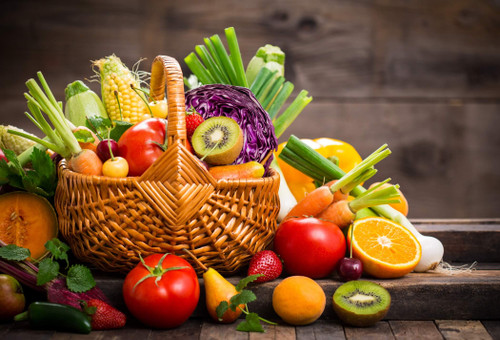
Fruits & Vegetables
You've probably heard the advice before: "Eat a rainbow!" When nutritional consultants and health enthusiasts say this, they're not talking about candy or anything artificially colored! They mean fruits and vegetables. When you're on a cleanse like DrNatura's Colonix program, eating a sufficient amount of fruits and vegetables is a guaranteed way to boost the cleansing process and maximize results. This isn't news, of course: everyone knows that getting sufficient fruits and veggies each day is a part of a healthy diet. But let's investigate why.
When you consume fruits and vegetables, you provide yourself with powerful nutrition - vitamins, minerals, fiber, and phytonutrients - all of which benefit the body from head to toe. During a cleanse, the addition of fresh fruits and veggies of a variety of colors provides nutrition that your body uses to stabilize blood sugar (which cuts down on cravings), reduce risk of many different chronic diseases, protect the brain, feed the "friendly" bacteria in the gut, boost mood, and more. [8] , [9] , [10]
How should you eat your fruits and veggies? Ideally, the bulk of your fruits and vegetables should be consumed raw or lightly cooked, as heat can destroy naturally occurring enzymes, as well as some vitamins and phytonutrients. [11] However, the reality is that it's better to get them cooked than not at all, but do try to avoid frying and boiling, as these may reduce the benefit you receive from them. [12] , [13]

Legumes, Nuts, & Seeds
Finally, don't forget to add legumes, nuts, and seeds to your diet. (Legumes are a class of food comprised of beans, peas and lentils.) Legumes have more protein in them than any other plant-derived food, they are full of vitamins and minerals, and they are also packed with phytonutrients that provide a range of positive health effects including reduction of risk for various cancers. [14]
Similarly, nuts and seeds of various varieties can complement a cleansing diet well by provide healthy fats and lots of health-supporting minerals. Like legumes, nuts and seeds have powerful cancer prevention characteristics, and they also cut heart attack and coronary heart disease risk in half for those who eat them at least five times a week. [15]
When included in your diet during a cleanse, legumes, nuts, and seeds provide additional fiber, which helps to bulk up the stool and escort waste out of the body. They also help keep blood sugar levels stabilized, which can reduce cravings for unhealthy foods. [16] , [17]
Putting It All Together
So, what does all this dietary advice look like in action? Here's a quick checklist. [18]
-
Water
Drink plenty of good, clean water each day (and at least the 8, eight-ounce cups recommended during the DrNatura Colonix program) -
Vegetables
Minimum of 5 Servings Daily -
Fruits
Minimum of 4 Servings Daily
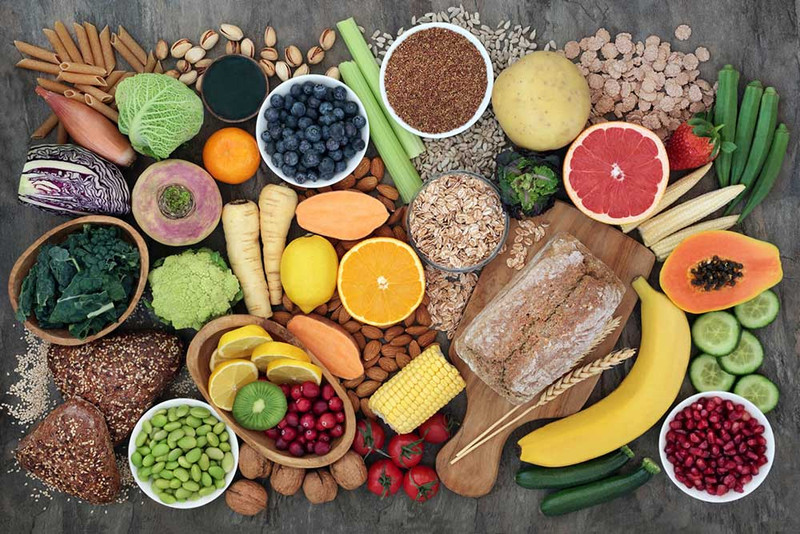
-
Legumes
1-3 servings daily (i.e., beans, peas, lentils, peanuts, etc.) -
Whole Grains
6 servings daily -
Nuts & Seeds
1-3 servings daily
What About Everything Else?
It's unlikely that you'll switch to a fully plant-based diet while on the DrNatura Colonix program, and you certainly don't need to in order to see amazing results of the cleanse. But here are a few guidelines that will help you make more room in your daily diet for all the good stuff mentioned above that often gets displaced by foods listed below:
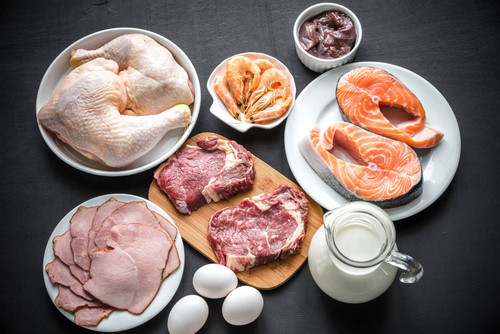
-
Dairy
No more than 1-3 servings of low-fat or non-fat each day; choose organic whenever possible. -
Eggs
No more than 1 per day -
Seafood
2-4 servings per week -
Lean Meats
No more than 1-3 servings per week (i.e., chicken, turkey, etc.) -
Alcohol
The fewer you take in, the better./Sweets /Caffeinated Beverages
Putting it Into Practice
So, what would all of this look like if you were to put it into practice? Let's take a look:
Typical

-
Pancakes, waffles or French toast with syrup; coffee with cream and artificial sweetener
-
Blueberry bagel with 2 tbsp cream cheese; chocolate milk
-
Cheeseburger, French fries and a soda
-
Candy bar
-
Supreme or Meat Lover's pizza, bread sticks and chicken wings
-
Chili dog with fries
-
Soda or diet soda
-
Ice cream
Better

-
Pancakes, waffles or French toast with fresh fruit; coffee with cream and raw sugar or honey
-
Blueberry bagel with 1 tbsp light cream cheese; orange juice or milk
-
Grilled chicken sandwich, side salad with ranch dressing and a soda
-
Granola bar
-
Vegetarian pizza, small side salad
-
Hot dog with onions and relish, with baked chips
-
Bottled, flavored iced tea
-
Low-fat ice cream or frozen yogurt
Best

-
Whole-grain pancakes, waffles or French toast with nut butter and fresh fruit or honey; green tea with lemon and/or honey
-
Whole-wheat bagel with natural (no sugar added) nut butter; water
-
Portobello mushroom burger on whole wheat bun, side salad with olive oil and balsamic vinegar, and water or sparkling water with lemon
-
Handful of mixed nuts with raisins and dried berries
-
Large salad, slice of homemade veggie pizza on whole-wheat dough
-
Veggie dog on whole wheat bun with ketchup, mustard, onions and relish, and a side salad
-
Sparkling water with citrus or berries
-
Organic, unsweetened plain yogurt over mixed berries
DrNatura Full Line of Cleansing Products
References:
-
How Much Water do You Drink? (2020). Harvard Health Publishing: Harvard Medical School.https://www.health.harvard.edu/staying-healthy/how-much-water-should-you-drink
-
Colonix Intestinal Cleanser (n.d.). DrNatura.https://www.drnatura.com/colonix-intestinal-cleanser/
-
Balch, P. A. (2003). Prescription for Dietary Wellness, 2nd ed., New York, NY: Penguin Group. Pg. 201.
-
Balch, P. A. (2010). Prescription for Nutritional Healing, 5th ed., New York, NY: Penguin Group. Pg. 6.
-
Balch, P. A. (2003). Prescription for Dietary Wellness, 2nd ed., New York, NY: Penguin Group. Pg. 108.
-
Holford, P. (2004). The Optimum Nutrition Bible, Revised ed., Berkeley, CA: The Crossing Press. Pg. 80.
-
Guthrie, C. (2019). The truth about refined grains. ExperienceLife.com.https://experiencelife.com/article/the-truth-about-refined-grains/
-
Balch, P. A. (2003). Prescription for Dietary Wellness, 2nd ed., New York, NY: Penguin Group. Pg. 75.
-
Balch, P. A. (2003). Prescription for Dietary Wellness, 2nd ed., New York, NY: Penguin Group. Pg. 58.
-
Holford, P. (2004). The Optimum Nutrition Bible, Revised ed., Berkeley, CA: The Crossing Press. Pgs. 147-162.
-
Balch, P. A. (2003). Prescription for Dietary Wellness, 2nd ed., New York, NY: Penguin Group. Pg. 76.
-
LaMotte, S. (2016). The healthiest ways to cook veggies and boost nutrition. CNN Health.https://www.cnn.com/2016/05/05/health/healthy-vegetable-cooking/index.html
-
Greger, M. (2019). Best ways to cook vegetables. NutritionFacts.org.https://nutritionfacts.org/video/best-way-to-cook-vegetables/
-
Balch, P. A. (2003). Prescription for Dietary Wellness, 2nd ed., New York, NY: Penguin Group. Pg. 118.
-
Balch, P. A. (2003). Prescription for Dietary Wellness, 2nd ed., New York, NY: Penguin Group. Pg. 125.
-
Anderson, S. C. (2019). The Shocking Source of Your Cravings. Psychology Today.https://www.psychologytoday.com/us/blog/mood-microbe/201905/the-shocking-source-your-cravings
-
Fiber. (n.d.). NutritionFacts.org.https://nutritionfacts.org/topics/fiber/


